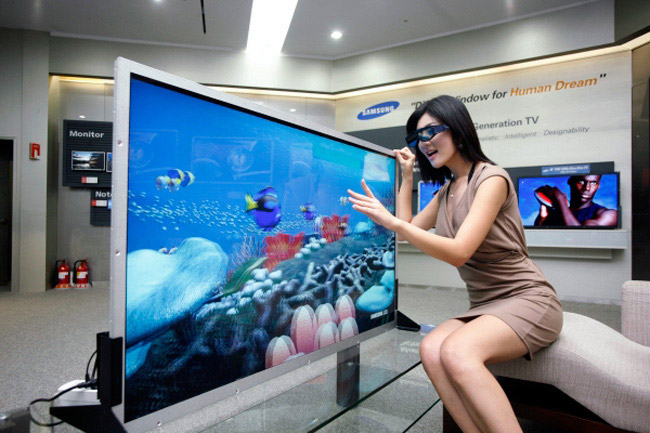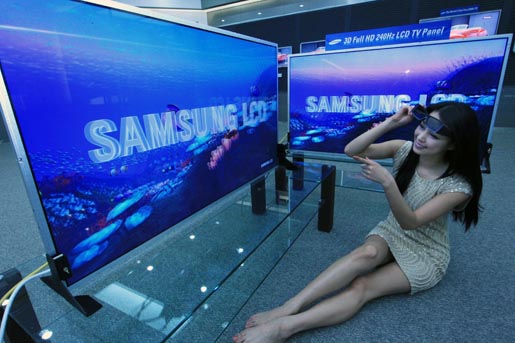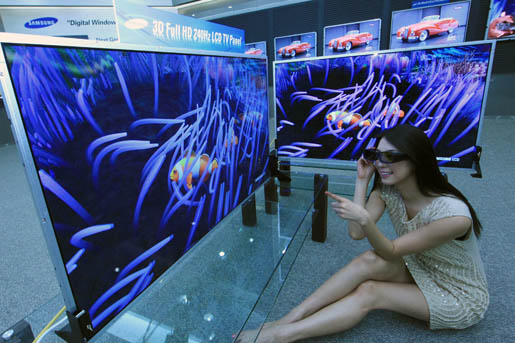 Samsung Electronics Co., Ltd, a global leader in display technology and digital media, announced that it has become the first company to commence mass production of panels for 3D LED TVs and 3D LCD TVs.
Samsung Electronics Co., Ltd, a global leader in display technology and digital media, announced that it has become the first company to commence mass production of panels for 3D LED TVs and 3D LCD TVs.
“Recently, 3D displays have captured the industry spotlight,” said Wonkie Chang, president of the LCD Business at Samsung Electronics. “Samsung Electronics aims to lead the global 3D TV panel market in pioneering panel mass production for 3D LED and LCD TVs.”
The company began producing LED and LCD compatible panels for 40-inch, 46-inch and 55-inch full-HD 3D TVs using ‘3D Active Glasses’ this month, employing Samsung’s exclusive true 240Hz technology.

Samsung’s true 240Hz technology delivers full-HD viewing in 2D, and also smooth, natural, full-HD 3D images that can vividly capture rapid movements.
By incorporating true 240Hz technology, operating at 240 frames per second, Samsung’s panels deliver a more lifelike picture with alternating left and right eye images through the use of 3D Active Glasses technology.

Samsung has reduced the response time of its LCD and LED panels by 20 percent to less than four milliseconds, eliminating any interference between left and right eye images. With this improved response time, Samsung is able to achieve natural 3D images and also deliver 2D pictures capturing rapid movement with exceptional clarity.
Samsung’s new 3D Active Glasses technology first blocks the left and then right lens, causing a momentary lag when images are shown to each eye to achieve more lifelike 3D images. The term, ‘3D Active Glasses,’ was selected as an official term by the Glasses Standardization Working Group of the Consumer Electronics Association (CEA) earlier this year.

The polarized glass method previously used in 3D glasses produced separate images for the left and right eyes, resulting in half the resolution of two-dimensional pictures as only half of the screen can be viewed through each polarized filter. Brightness was also lowered because of the polarized filter.
According to a market research firm, DisplaySearch, the 3D display market is expected to grow from $902 million in 2008 to $22 billion in 2018. The 3D TV market is expected to expand to a $17-billion market, with sales increasing from 200,000 units in 2009 to 64 million units in 2018.
Source: Businesswire
